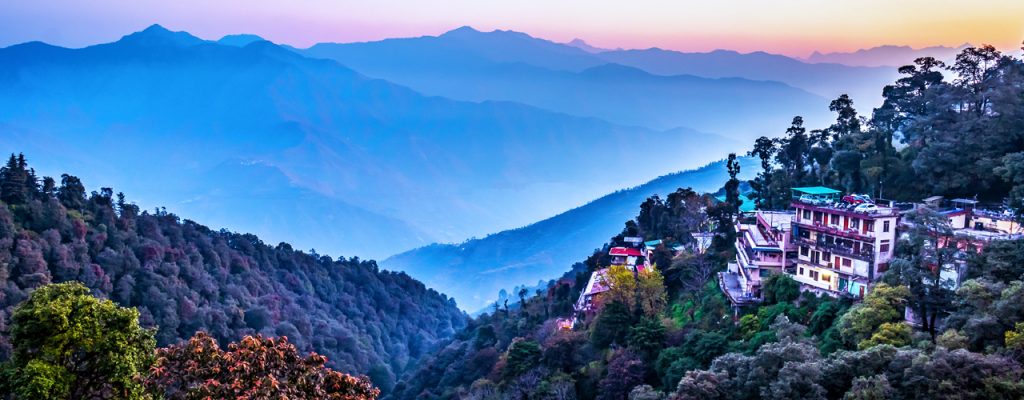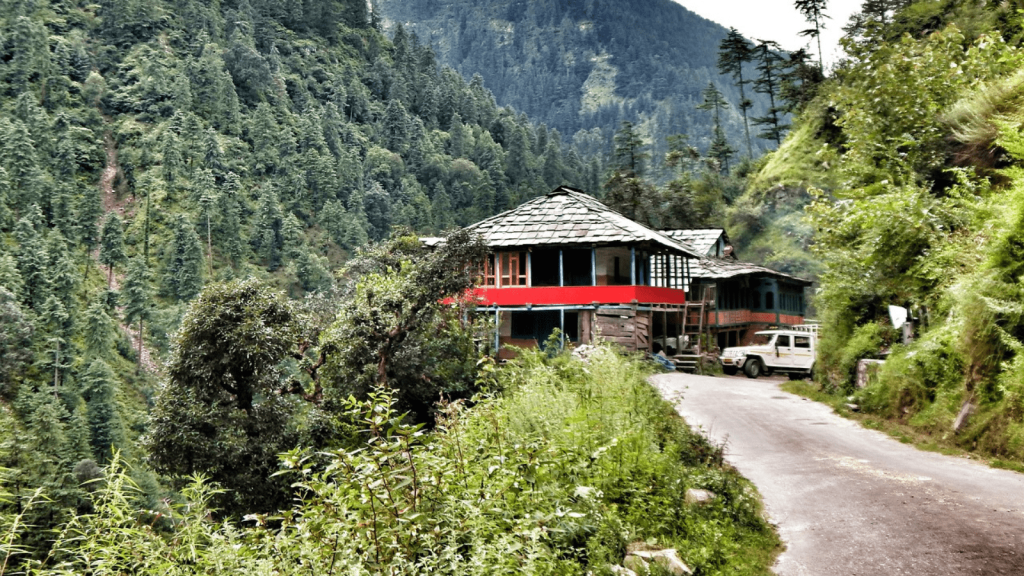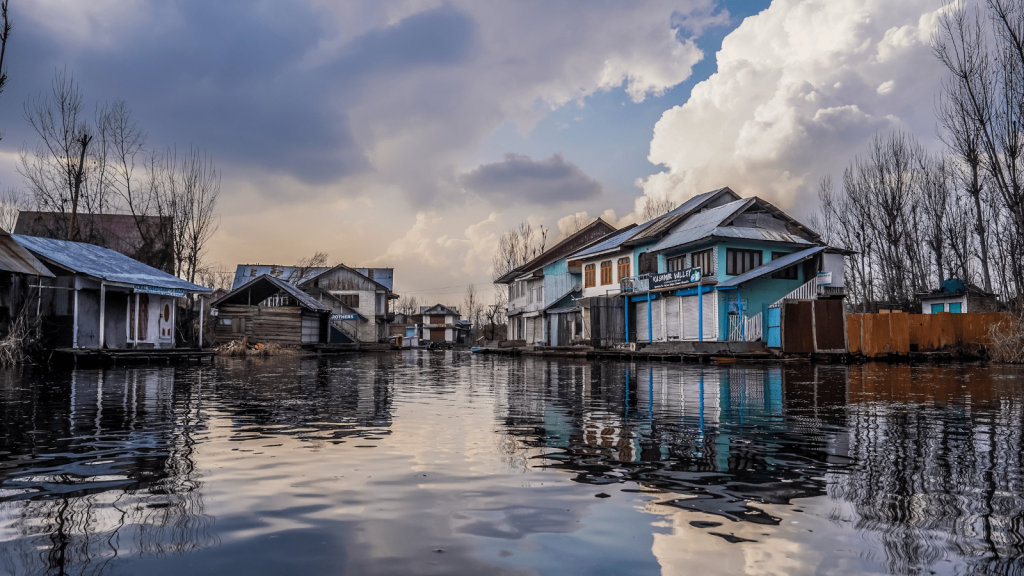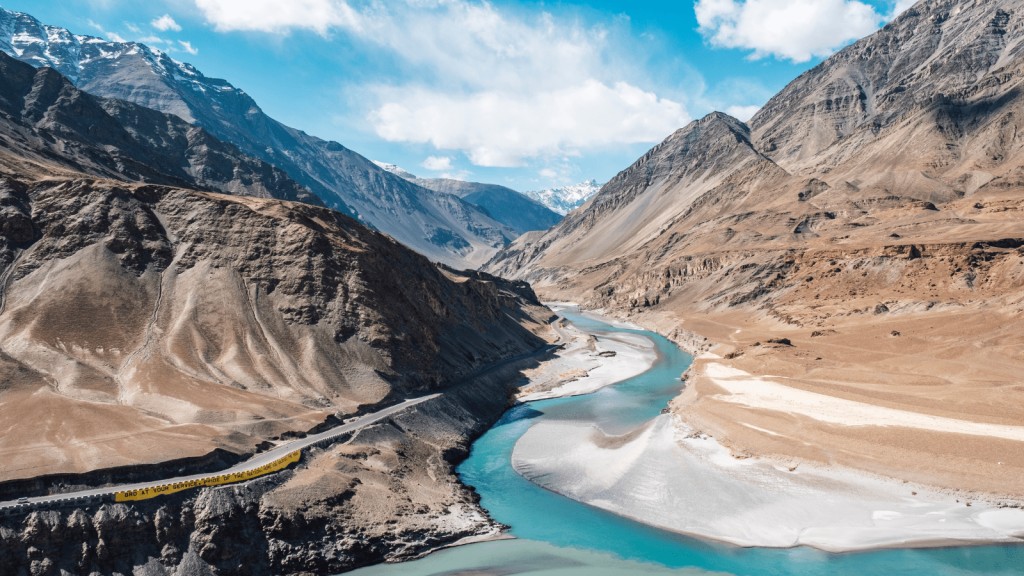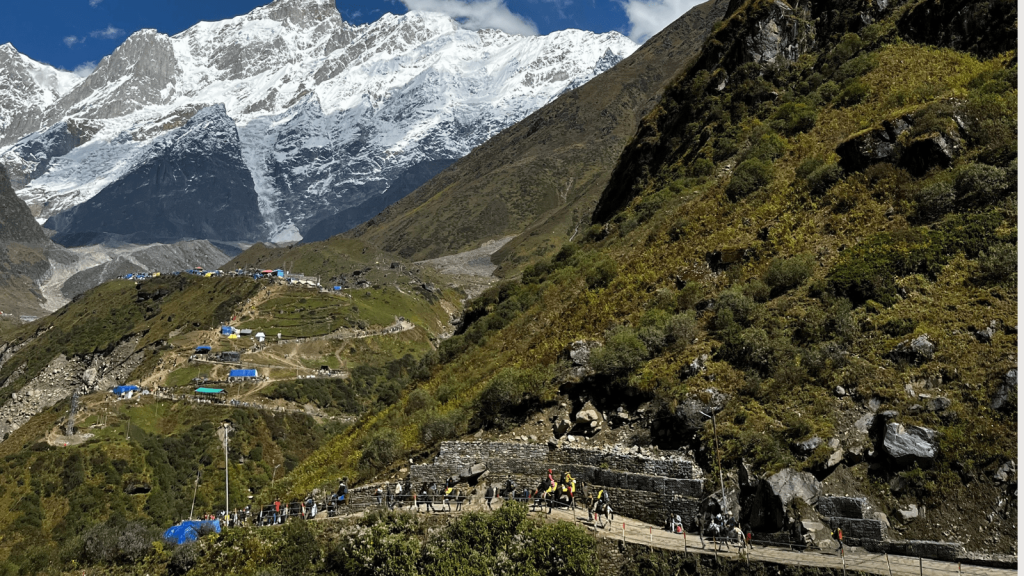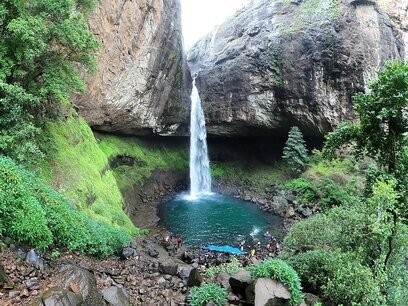The Best Places to Visit in Mussoorie
The "Queen of Hills," Mussoorie, is one of the generous hosts of Himalayan Beauty. In this blog you'll find best places to visit in Mussoorie. Located above the Doon Valley, the year-round lovely weather of this place restores tranquility and happiness to the chaotic mind. Travelers come to Mussoorie from all over the world for a variety of reasons. The scenic backdrop of Mussoorie is reminiscent of a storybook. It will always entice its visitors to appreciate the joy of being together.
This hill town in Uttarakhand is the ideal location for a relaxing vacation because it is dotted with both small and large natural treasures, such as the Shivalik Mountains and Kempty Waterfall. The whole town is full of hotels, home stays, libraries, and churches, whose architecture will remind you of colonial days. The picturesque landscapes that the hill station boasts of will leave you gasping.
The top adventure activities in Mussoorie include Sky Walk, Zipline, rock climbing, mountain biking, paragliding, and rafting. People like Sir George Everest and Ruskin Bond moved there because of how beautiful the town is.
In this blog you'll find places to visit and activities to do in Mussoorie.
Delhi-Mussoorie transport options:
- Bus from Delhi to Mussoorie
A bus is one of the most efficient and comfortable ways of reaching Mussoorie from Delhi. This service is so effective that those arriving in Dehradun via plane or train also ride the bus from this point on till they reach Mussoorie. Though there are direct buses available from Delhi to Mussoorie, in case you don't get a direct bus, you can board a bus to Dehradun, then get down there and board another bus to Mussoorie. Dehradun and Mussoorie are only 32 kilometres apart. Both state transport and private buses are frequently available that are headed to Mussoorie. Online reservations can be made for them through a variety of websites and apps.
- Train from Delhi to Mussoorie via Dehradun
Although the hill town of Mussoorie lacks a railway station of its own, the 32-kilometer-distance between Dehradun Railway Station and Mussoorie can be covered in an hour. The best way to cover this distance between the station and Mussoorie is by taxi, which is easy to find and reasonably priced. Several trains travel to Dehradun each week from Delhi. These trains leave from 3 major stations in Delhi: Hazrat Nizammudin Station, New Delhi Station, and Old Delhi Station.
- Driving from Delhi to Mussoorie
The trip from Delhi to Mussoorie will be as comfortable as possible thanks to the well-paved, amenities-filled highways. It is also not a very long route, which makes traveling and covering the 279-kilometer distance simpler. When going from Delhi to Mussoorie, there are various routes one can follow. The best option is to get help from google Maps and it will show you the shortest and most effective route to reach from Delhi to Mussoorie.
- Fly from Delhi to Mussoorie via Dehradun
About 219 aerial kilometers separate Delhi from the charming hill town of Mussoorie. However, because Mussoorie lacks an airport of its own, this distance cannot be covered entirely by air. To get to Mussoorie by air get down at the Dehradun Airport popularly known as Jolly Grant Airport. From there you can hire a taxi or take a bus to Mussoorie which is 55 minutes away. Despite being 30 kilometers away from the city of Dehradun, this airport has good road access to it.
What time of the year is ideal for a trip to Mussoorie?
The ideal time to visit Mussoorie begins in April and stretches up to the middle of July. Another season begins from mid-September and stretches up to mid-November, when you can witness the majestic Himalayas gradually getting covered in snow. Progressively, to experience the snowfall, you can visit Mussoorie from December through February.
It is suggested to avoid the monsoon season, which begins in mid-July and runs till mid-September.
How is the weather in Mussoorie during the summer, monsoons and winter?
Mussoorie experiences the summer, monsoon, and winter seasons. The summer months are March through June. The weather is pretty comfortable at this time of the year, with an average temperature of about 37°C. The monsoon season lasts from mid-July until September. It is advised to stay away from the monsoon season because unforeseen downpours and landslides can ruin plans. The winter season starts in October and lasts through the end of February. Winter temperatures are quite low, and snowfall is mild to heavy. Temperatures as low as 0 degrees Celsius or even minus can sometimes be experienced during the season.
Temperature Ranges:
The average daily temperature exceeds 28°C from March to mid-July.
From mid-July to mid-September, Mussoorie experiences heavy downpours with temperatures ranging from 15 °C to 29 °C.
From October to February, the winter season, an average daily high temperature is around 17°C and an average low temperature is around 2°C.
Does it snow in Mussoorie?
Even if the daytime temperatures are tolerable, the occasional dips below zero can make the nights exceedingly chilly. Mussoorie experiences medium-to-heavy snowfall, particularly from December to February.
Places to visit in Mussoorie
- The Kempty Waterfall:
It is one of Mussoorie's top locations for family picnics. It was built 150 years ago by a British official for tea parties, and today it is the centre of fun for picnics and great family get-togethers.
It is one of Mussoorie's most well-known tourist destinations, which is encircled on all sides by breathtaking mountain ranges. It is situated at an elevation of 1,364 m and offers the most breathtaking view of the surrounding natural beauty and hill towns. You will be amazed by the beautiful waterfalls, and you won't be able to say a word when you hear the waves far away.
- The Lake Mist:
One of the most stunning places in Mussoorie, the Queen of Hills, is the pristine Lake Mist. It is the perfect place to spend special moments with your family and friends because the emerald waters are surrounded by lush forest terrain.
On the route to Kempty Falls, this lake is a gem of an attraction. The lowest number of visitors makes this picturesque lake stand out, allowing you to relax in the peace and quietness of nature.
- The Tibetan Temple:
The Tibetan community in Mussoorie lives in Happy Valley, which is located 2.5 kilometres from the Library Bus Stand. Additionally, it is well known for holding the Municipal Gardens, Tibetan temples, and the IAS Academy.
The magnificent Tibetan culture is preserved in Mussoorie through the Buddhist Temple and Tibetan Homes Foundation. The Indian government established Happy Valley's Central School for Tibetans in 1960, and it is still regarded as a reputable institution of higher learning. The father of Hindi literature, Mahapandit Rahul Sankrityayan, spent a few years residing with his family in the structure that is now the Central School dispensary.
The community is surrounded by a nice green environment. The popular Tibetan temple, Shed Choephelling Temple, is located on the highest cliff of the Happy Valley. The Dalai Lama blessed this first Tibetan shrine to be erected in India. It is a spectacular example of Tibetan architecture, with beautifully carved walls and ceilings that depict the stories of Tibetan culture. There are many Buddha statues and prayer wheels in this temple. Moreover, you can witness the fantastic panoramic view of the Benog Hill circuit from here.
- The Municipal Garden:
Company Bagh, also known as Municipal Garden, is located in the Happy Valley just next to the Lal Bahadur Shastri National Administration Academy in Mussoorie, 3.5 km from Mussoorie Library Bus Stand. It is a well-liked tourist destination in Mussoorie. The Garden Welfare Association of Mussoorie looks after the park.
A popular spot for picnics in Mussoorie, it was formerly known as Mussoorie Botanical Gardens. Dr. H. Fackner, a well-known geologist, made this garden in the early 1900s.
There are approximately 800 different varieties of flowers there, including petunias, dahlias, and begonias. There is a nursery in the garden where a variety of plants are available for purchase.
The garden also features an entertainment park for kids with various thrilling rides. The garden's tiny lake has boating facilities as well. Additionally, a telescope has been set up to provide a better view of the nearby peaks.
- The Dhaunaulti Forest:
At the end of the Mussoorie-Tehri state highway, 30 kilometres away, at a commanding elevation of 2275 meters, sits the Dhaunaulti Forest. It is densely populated with deodar trees. 5 km to Buranskhanda and 3 km to Chorpani, which are the two popular treks nearby? With a quick 1 km ascent to the peak, the Surkanda Devi Temple is located 7 kilometres away. When it snows heavily in the winter, Dhanaulti is a popular vacation spot. It's enjoyable to drive on the Dhanualti-Naglibba forest road. About 40 kilometres from Dhanaulti, the Tehri Dam is worth visiting.
Full of deodar, oak, and rhododendron trees, Dhanaulti also has facilities for activities like Burma Bridge, Flying Fox, Trampoline, etc., as well as short hikes and treks. It also offers views of the Doon Valley and the Himalayas.
- The Surkhanda Devi Temple:
Surkanda Devi Temple is a Hindu temple located at Kuddukhal close to Dhanaulti in the Tehri district of Uttarakhand state. It is about 35 km away from Mussoorie. It is one of the most well-known pilgrimage sites in Uttarakhand and one of the must-see locations. It is situated on the Chamba-Dhanaulti Road.
Parvati, the goddess, is honoured in the Surkanda Devi Temple. It is one of the 51 Shakti Peeths scattered over the Indian subcontinent, and is famous for forming the triangle of three Devi Darshans, the other two being the Kunjapuri and Chandrabadni.
According to folklore, the goddess Sati, the bride of Lord Shiva, is responsible for the creation of the Surkanda Devi temple. Sati sacrificed herself as part of her father Daksha's offering after the latter embarrassed Shiva by refusing to invite the pair to the Yajna. The current Surkhanda Devi temple gained its name as Sirkhanda, which over time became Surkanda because Sati's head fell at the location when Shiva was passing by this location on his route back to Kailash carrying Sati's body.
The temple, which is known for its beautiful architecture and has a 360-degree view of the area around it and the snow-covered Himalayan peaks, is about 2756 metres high.
Additionally, it offers a stunning view of Chakrata, Chandrabadni, Pratapnagar, Chandrabadni, Rishikesh, and Dehra Dun. There are a lot of native herbs and flowers grown here, and some of the most beautiful birds of the western Himalayas live here, too.
A 2-kilometer journey is necessary to reach the Surkanda Devi temple from the village of Kaddukhal. The 30-minute round-trip hike is on a well-paved path. Visitors can also travel on an 8-kilometer hike road through the deep forest from Dhanaulti to the temple. As a result, hikers find it to be a popular attraction.
On the eve of Ganga Dussehra, the Surkhananda Devi Fair is observed at the shrine. Every year, the festival is held in May or June and draws a sizable following of devotees.
- The Mall Road:
The Mall is the primary shopping street located in the heart of Mussoorie, around 3 kilometres from the Library Bus Stand. Kulri and Library, two important bazaars, are connected by the Mall road.
The benches and lampposts that line the sides of The Mall Road were created by the local British population. Some of the area's top attractions are skating rinks, the Methodist Church, and video game arcades decorated in the manner of the 1980s. The tourist information office, rows of Tibetan trinkets, and several stores selling wooden antiques are located next to the mall. One of the best things to do in Mussoorie is shop on Mall Road.
The Mall Road is the beginning of the cable car ride to Gun Hill's summit, located 2142 metres above sea level. Here, visitors can also go horseback riding. There is also a playground with a variety of games and attractions for kids.
- The Camel's Back Road:
Camel's Back Road runs for 3 kilometres near Library Chowk. Popular among tourists, it gives a glimpse of the heritage the city holds as you take a casual stroll in the evening while checking out the small shops on both sides.
The rock that resembles a camel's hump on its back gave rise to the name of the route. Camel's Back Road was constructed in 1845 to give a spectacular view of the Himalayas while you walk. There is a historic Hawa Ghar along this road from which visitors can observe the impressive peaks. The previous name of this Hawa Ghar was Scandal Point.
For those who want to get a closer look at the Himalayan peaks, telescopes are provided here. Along the road, there is also an old cemetery, founded in the nineteenth century. Many tourists from other countries come here hoping to find the graves of their ancestors.
Camel's Back Road is easy for tourists to get to by auto rickshaws and horseback rides.
- The Jawahar Aquarium:
The newest brilliant jewel in Mussoorie is the Jawahar Aquarium. This magnificent aquarium is located up a hill and may be reached via cable car. Some of the most unique fish are kept in great shape in the tanks at the Jawahar Aquarium in Mussoorie, where the water is very clear.
The Jawahar Aquarium in Mussoorie is home to tropical fish like scarlet piranhas and miniature sharks. The Aquarium is a modest attempt to promote Mussoorie tourism by engaging visitors of all ages. The brilliant and colourful fish aquarium is a purely enjoyable experience.
- The Ropeway to Gunhill:
Gun Hill is the second-highest peak in Mussoorie and can be reached through the ropeway. You are transported 400 metres above the mall road by cable car. The trip on this cable car takes ten minutes. The amazing panoramic view can be enjoyed while you are up in the air. If you are lucky, you may also witness some beautiful wildflowers blooming on the way.
Some telescopes have been erected at the summit so that tourists can look farther away for a better view. A historic "cannon" that is currently considered antique is installed on Gun Hill. To signal to the people that it was afternoon back in the day, a cannon would be fired every day at noon. The Gun Hill earned its name from this.
- The Picture Palace:
Welcome to Picture Palace, which takes pride in being one of the first 5D movie theatres in India, not to mention, Mussoorie. Therefore, if you are missing a multiplex experience while visiting this beautiful hill station, just walk into this upscale theatre. It is more than just a movie lobby; it is a whole experience with an exciting gaming area, popular restaurant, and a food court where you can sample a wide variety of cuisines that are a true delight for your taste buds. Come, discover, and bring some energising memories home!
- The George Everest Residence:
Constructed in 1832, the George Everest House is popular as "The Park Estate". These days, camping, picnics, and adventure expeditions are popular at the George Everest House and on George Everest Peak. Due to its proximity to the popular cities of Dehradun and Mussoorie, it's becoming the most visited destination by the tourists who flock there in the season.
- The Lal Tibba Peak:
Mussoorie's tallest peak, Lal Tibba, is a well-known destination in the area. Lal Tibba never fails to amaze, whether it's the beautiful sunrise or sunset views or the beautiful mountain peaks.
Lal Tibba is a hilly trail that is covered in a deep deodar tree canopy. The entire track is marked.
The Lal Tibba Binocular Cafe at the summit has a mounted telescope that has been authorised by the authorities. On a clear day, you get a great view of the Himalayas, including Badrinath and Kedarnath, through the telescope.
Lal Tibba is a simple hike that both novice and experienced hikers can complete.The journey is 3 kilometres each way. The hike climbs to a height of 7463 feet and has some steep sections. Therefore, to enjoy the walk, you must be in good physical shape.
- The Soham Heritage and Art Center:
Through paintings on canvas, sculptures, frescoes, murals, and scrap art, the Soham Heritage & Art Centre presents Himalayan culture and tradition. With the help of many art forms, this art centre aims to showcase the complexity and knowledge of the Himalayas in one location.
The Soham Heritage & Art Centre, which is both a museum and an art gallery, is primarily concerned with the Himalayan culture of Uttarakhand. You will be given a tour of the exhibits, which include cultural artifacts, historical photographs, and an art gallery with paintings by Kavita, who founded this privately run museum with her husband, Samer. Proceeds from the entry go to a local orphanage that they manage.
It's a steep five-minute walk from the Picture Palace along the bend in the main road.
Activities to be done in Mussoorie:
- River rafting:
Mussoorie is the ideal location for white water rafting because it is blessed with swift mountain rivers. In actuality, river rafting is among the most well-liked adventure activities that almost all visitors find irresistible.
Swift water Rafting is a team sport that tests your stamina and sense of camaraderie. You can raft 20 kilometers upstream against the powerful Yamuna River in this thrilling outdoor adventure. There are five different water levels with varying degrees of throttle, allowing you to select a rafting excursion that matches your mental and physical skills.
Class 1: Narrow rapids that may call for a little maneuvering. (Initial skill level)
Class 2: Lightly rumbling water that may occasionally include boulders and necessitate careful navigation. (Skill level: Basic knowledge of paddling)
Class 3: This is rather safe, however it features modest waves and small predictable drops. It May calls for considerable maneuvering. (Skill level: Some rafting experience.)
Class 4: Whitewater with moderate waves, a significant drop, and rocks. Sharp movements might be required. (Skill level: Exceptional experience rafting)
Class 5: Foaming waters with high volume and waves, the potential for large rocks, and hazards such as steep drops that call for careful steering. (Skill level: Complete Rafting mastery)
Classes 6 and 7 are hazardous. Rafters should prepare for significant whitewater, enormous waves, significant rocks, dangers, and/or significant drops that can cause severe impacts.
- Paragliding in Mussoorie:
Paragliding in Mussoorie is done near Mussoorie Lake. Paragliding at Mussoorie offers a clear view of the Himalayas and burgeoning flora. Enjoy the aerial view of the lovely town of Mussoorie as you fly past pine-filled forests, slopes, the valley, charming settlements, and the summits of several hills. With the help of a knowledgeable guide, soar 4000 feet in the air while taking in the panoramic views as you attempt this thrilling adventure.
When you get there, meet your qualified paragliding pilots, who have received international certification. The pilot begins the activity by explaining the steps, safety precautions, and other minor information so you may have a memorable flight.
You will be provided with a helmet and a harness to keep you safe. The pilot will check to see if you are comfortable and satisfied with your flight. After safety checks, you will leave to experience the renowned paragliding in Mussoorie while still being tied to your pilot. As you soar through the air and take in the town's splendor from above, your heart rate will rise and your surge of adrenaline will deepen. After landing, a motorbike provided by the operator will be used to transport you back to the starting site.
Nearby Towns to Visit near Mussoorie:
- Dehradun: One of the quickest weekend getaways in Uttarakhand is a journey to Dehradun, which is located among the Himalayan foothills about two hours south of Mussoorie.
Mussoorie and Dehradun are separated by a 33-kilometer drive that takes about 1.5 hours to complete. From Mussoorie to Dehradun, the drive is very intriguing. Throughout the journey, you will be mesmerized by the picturesque lanes lined with tiny wooden cottages and pine trees.
- Landour: A settlement in southwest Wales with the name of Llanddowror served as the inspiration for the name of Landour, a Cantonment town in British India. Landour makes you think of the British Raj because it is hidden in the Himalayan mists and covered in dense deodar trees and rhododendrons that are scarlet red. It's a distinct world of calm and green scenery, a steep 5-kilometer drive or walk from the busy bazaars of Mussoorie. It takes about 21 min via The Mall Road to reach there.
- Kanatal: Kanatal is a hill town that is set at an incredible altitude of 8500 feet on the Chamba-Mussoorie road. It is a very tranquil location that is tucked away in Uttarakhand's quiet natural surroundings, far from the bustle of the city. Kanatal is 35 kilometers from Mussorie and one hour's drive takes you there with absolute ease.
- Chamba: Because of its magnificent, unadulterated beauty, Chamba, a small peaceful hamlet in the state of Uttarakhand, is becoming more and more popular with tourists.
The Virgin forests that are diversely and densely populated with Deodars, Rhododendrons, and Pine trees, give a spectacular view of the Chamba Valley. Moreover, the apricot and apple orchards add to their beauty.
Tourists and nature enthusiasts from all over the world are sure to be drawn to the captivating vistas in and around the Chamba valley. Due to its advantageous location close to Mussoorie, the area has recently grown in popularity, making it simpler to get there utilizing a variety of modes of transportation. It takes about 2 hr 13 min to cover 61.5 km via Chamba - Mussoorie Road to reach there.
- Nag Tibba: The Best Weekend Trek in India is Nag Tibba. Being the tallest peak in the lower Himalayas of the Garhwal region, Nag Tibba attracts many trekkers all around the year.
Resembling a snake-like figure, the trek’s name translates into English as Serpents Peak. Being easily conquerable by both novices and seasoned trekkers, the trek has become a popular attraction among tourists visiting from all across the world.
As you reach the summit you can offer prayers at the little temple built there and witness the entire Banderpunch range of the Great Indian Himalayas in its full flora and fauna. Nag Tibba is the ideal trek all around the year. Even during winters when the majority of treks are closed due to severe snowfall, Nag Tibba is still open and doable. It takes about 2 hr 53 min to cover 75.5 km via NH507/NH 709B to reach Nag Tibba base village from Mussoorie.
- Lakhamandal: Lakha Mandal is a venerable Hindu temple complex located in the Jaunsar-Bawar region of the Dehradun district, 75 kilometers from Mussoorie and 68 km from Chakrata. ASI has designated this monument as a monument of national significance. It is a well-known historical site in Uttarakhand.
Lord Shiva is honored in the Lakha Mandal temple. The Yamuna River and stunning mountains surround the temple. It derives its name by combining two words in Hindi- “Lakha” which means many and “Mandal” which means Temples. The Shakti Cult flocks to this temple frequently because they think that going to the shrine there will put an end to their woes. It takes 2 hr 43 min to cover 74.9 km via NH507/NH 709B from Mussoorie to reach there.
- New Tehri/ Tehri Dam/ Tehri Lake: The driving distance from Mussoorie to Tehri Garhwal is about 90 kilometers. Normally, getting there by car will take at least 3 hours and 5 minutes. One of the most gorgeous places in the Kumaon region is the lovely hamlet of Tehri Garhwal. The place is also known for having the fourth-highest dam in the world and the highest dam in India. The Tehri Dam is approximately 592 meters long and 260.5 meters high. It is a component of the Tehri Dam & Hydro Power Project, a multi-use river valley project designed to take advantage of the River Bhagirathi's enormous potential for irrigation and hydropower. Then there is Tehri Lake, a man-made dam reservoir perched at a height of 1,700 meters. It is the offshoot of Tehri Dam Construction and is popular among tourists.
- Rishikesh: The historic town of Rishikesh is one of the main tourist and pilgrimage destinations in northern India, drawing visitors from all over the world who are looking for peace. Surrounded by the majestic Himalayas, it has the immaculate Ganga flowing through it. The "capital of yoga" can be reached from Mussoorie in 2 hr 10 min via Ambala - Poanta Sahib - Herbertpur - Dehradun - Rishikesh National Highway. The distance covered in that period is 74.7 km.
- Chakrata: At 2,118 meters above sea level, the stunning hill station of Chakrata is surrounded by Himalayan peaks. This remote village, which is nestled in the Dehradun area, makes for a great weekend escape for travelers. It takes 2 hr 59 min to cover 81 km via NH507/NH 709B to reach Chakrata from Mussoorie.
- Haridwar: Haridwar, also known as the "portal to gods," is one of India's holiest pilgrimage sites and is situated where the Ganga, the most revered of all Indian rivers, meets the Indo-Gangetic plains. Haridwar, a city of temples and ashrams, is situated at the foot of the Himalayas, and its religious atmosphere permeates the entire city. The Kumbh Mela, an austere gathering of millions of Hindu pilgrims every twelve years, is held in four sacred places in India, one of which is Haridwar. Here, the Ardh Kumbh is held every six years. Every year during the rainy season, it also hosts the Kanwar Mela. It takes about 2 hr 17 min to cover thedistance of 81.5 km via Ambala-Dehradun-Haridwar Road to reach Haridwar from Mussoorie.
- Barkot: Barkot is a charming hill town that is positioned 1,220 meters above sea level. It is located in the Garhwal division's Uttarkashi district. The verdant environment of Barkot, which is rendered more charming by its isolation, is watered by the Ganga and the Yamuna. With its difficult walking trails and breathtaking vistas, it welcomes outdoor enthusiasts and nature lovers. It takes 3 hr 14 minto cover the distance of 91.9 km via NH507/NH 709B from Mussoorie to Barkot.
- Sankri: The entrance to the Govind Pashu National Park is in Sankri, which is tucked away in a valley of the Himalayas. Sankri essentially serves as the starting point for Himalayan treks, which might be simple or challenging. Thousands of tourists visit this charming village in Uttarakhand each year to experience the charm and peace it has to offer. It takes 5 hr 25 minto cover the distance of 153.1 km via NH507/NH 709B from Mussoorie to Sankri.
That’s all about the charming Hill Station known as Mussoorie. Treksandtrails makes sure that every traveler that gets associated with us doesn't miss out on a single adventurous experience that they can withhold in their memory for a lifetime. Happy Travelling!

